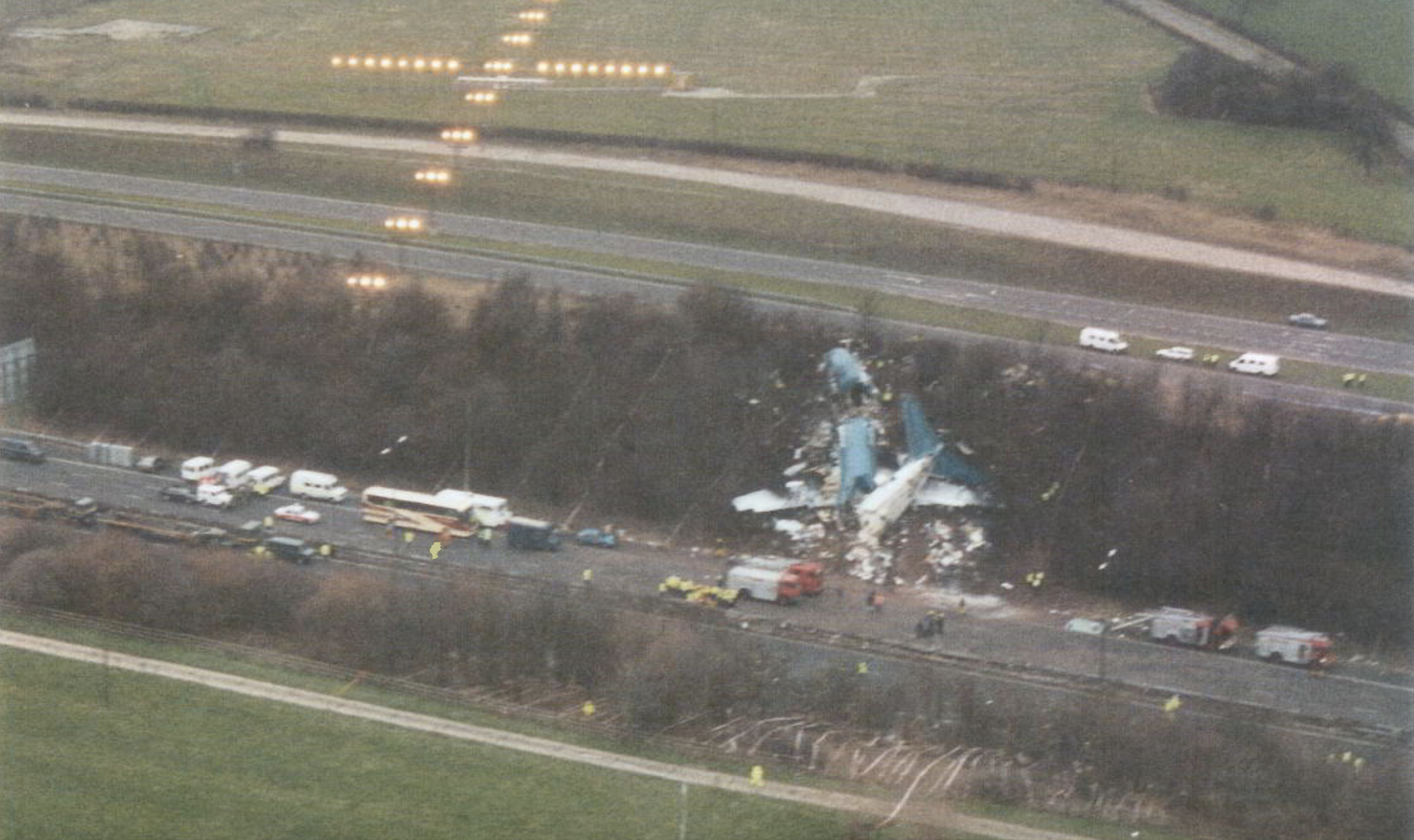Kegworth: the lessons learnt from the last UK air disaster
Many onboard, including three members of cabin crew, had witnessed flames from the left-hand engine. But no-one told the pilots, who had mistakenly shut down the other engine

At eight minutes to eight in the evening of 8 January 1989, a brand-new Boeing 737-400 jet belonging to British Midland took off from Heathrow Airport. Flight BD92 to Belfast International was commanded by Captain David Hunt, assisted by first officer David McClelland. There were 118 passengers and six cabin crew on board.
As the aircraft climbed through 28,300 feet on its way to a cruising altitude of 35,000 feet, the outer panel of one of the fan bands in the left-hand engine detached – causing what was described in the official report as “airframe shuddering, ingress of smoke and fumes to the flight deck”.
Mistakenly, the crew throttled back and then shut down the right-hand engine.
“They reacted to the initial engine problem prematurely and in a way that was contrary to their training,” the Air Accidents Investigation Branch concluded.
The pilots also failed to “assimilate the indications on the engine instrument display” before shutting down the healthy engine. When the first officer was asked which engine was causing the trouble, he responded: “It’s the le … it’s the right one.” The captain said: “OK, throttle it back.”
Immediately the engine was shut down, notes the report: “They were so sure that they had contained the situation that the commander engaged in lengthy communications with BMA [British Midland] Operations.”
After this conversation they initiated a diversion to British Midland’s home base at East Midlands Airport.
Many on board, including three members of cabin crew, had witnessed flames from the left-hand engine. But no-one told the pilots, even after the captain made a cabin announcement explaining the fault lay with the right-hand engine. The report called this “extremely unfortunate”.
Remarkably, the damaged left-hand engine continued to function until the aircraft was just under three miles from the runway threshold. But as the pilots commanded an increase in thrust before what they expected to be a “normal” emergency landing, the left-hand engine failed completely.
Only at this point did the captain and the first officer attempt to re-start the right-hand engine. Their efforts proved futile.
The aircraft was approaching the runway at East Midlands from the east, just south of the Leicestershire village of Kegworth. It is an approach which crosses the M1 motorway immediately before the runway threshold. With insufficient speed for controlled flight, the rear of the Boeing struck the eastern embankment of the M1 at 130mph.
The damaged aircraft was still aloft as it crossed the motorway, which miraculously was clear of traffic, destroying a lamp standard on the way. The 737 hit the western embankment at a speed of around 100mph and broke up into three sections.
Thirty-nine passengers died in the crash. A further eight passengers died later from their injuries. Of the remaining 79 occupants, all but four passengers and one crew member suffered serious injuries.
The official report makes grim reading, but led to a number of changes which have helped to make aviation safer.
Immediate steps included Boeing revising the flight manual for the 737-400, with advice passed onto pilots.
Recommendations centred on pilot training and better coordination between cabin crew and the flight deck. The report also led to better passenger safety briefing and awareness of the importance of adopting the right “brace” position.
Additional recommendations included more frequent engine inspections, more robust overhead stowage bins and for air-traffic controllers always to use a separate radio frequency when dealing with an aircraft emergency.
One recommendation which has not led to change was for “aft-facing passenger seats”.
The Kegworth accident was notable for something else: the presence of the airline boss in front of the world’s media. Michael Bishop (now Lord Glendonbrook), chairman of British Midland, was alerted to the crash by his secretary, who lived in the village of Kegworth. He reached the site within 30 minutes, and provided the media with information as it reached him.
Mr Bishop also made immediate initial payments of £5,000 to the injured survivors and the families of the victims.
The Kegworth disaster was the last major fatal accident involving a UK airline. Since 8 January 1989, the safety record of British – and Irish – carriers has been unparalleled.
Subscribe to Independent Premium to bookmark this article
Want to bookmark your favourite articles and stories to read or reference later? Start your Independent Premium subscription today.

Join our commenting forum
Join thought-provoking conversations, follow other Independent readers and see their replies